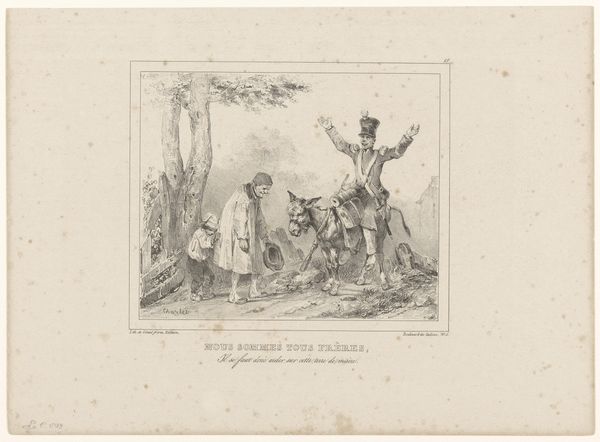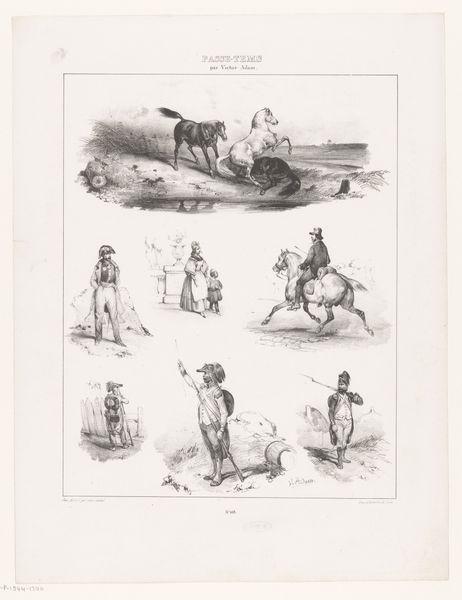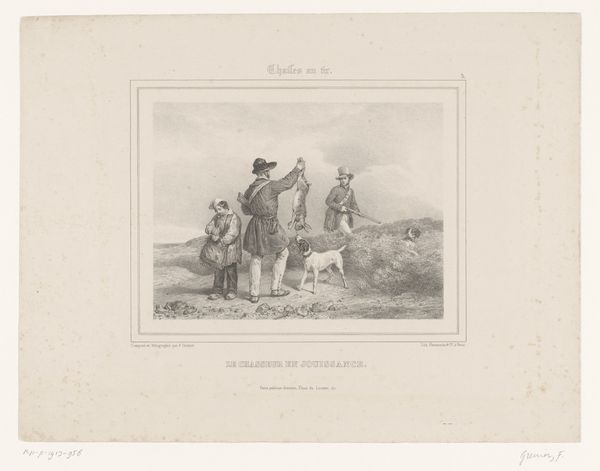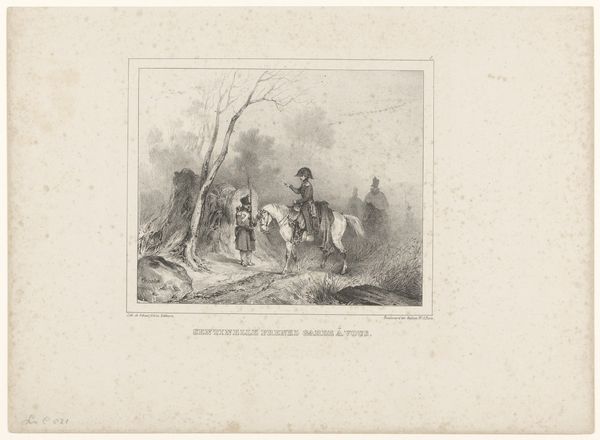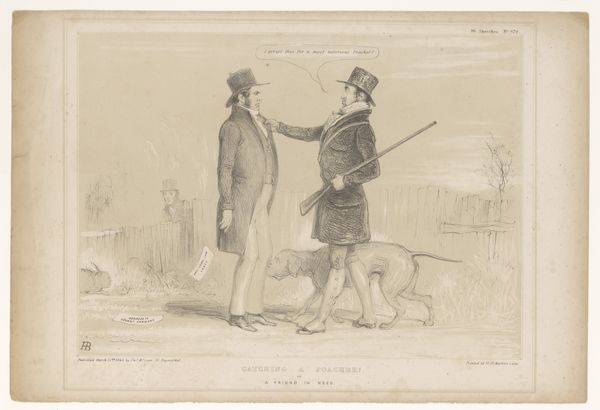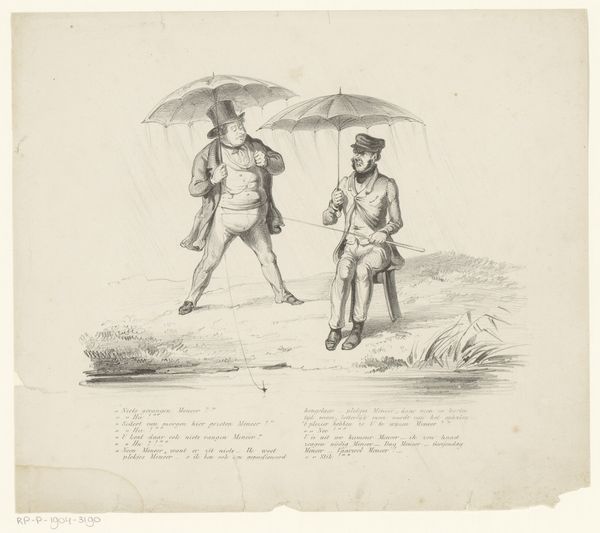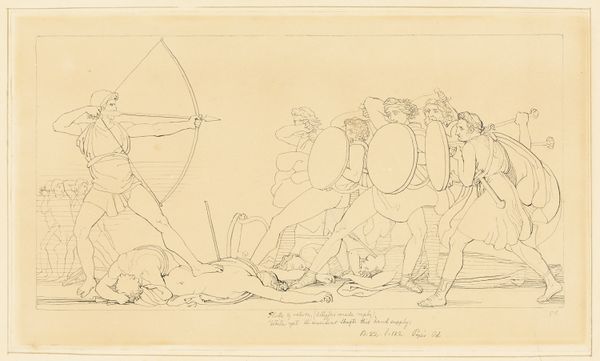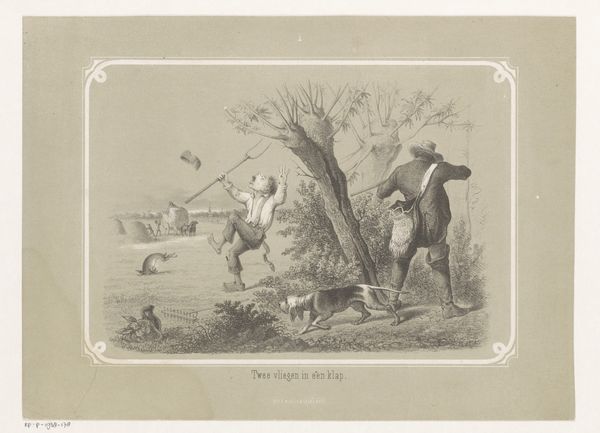
Dimensions: height 230 mm, width 264 mm
Copyright: Rijks Museum: Open Domain
Curator: Alexander Ver Huell's etching, "Visser slaat fles en glas van dienblad," which roughly translates to "Fisherman strikes bottle and glass from tray," appears to be a playful scene. Dated sometime between 1832 and 1897, it's housed right here at the Rijksmuseum. The etching on this work really gives it texture. What’s your initial response to the print? Editor: There is an odd calm to this scene. Given the action, it seems poised in a fleeting moment of impact. It all feels a little stiff, doesn’t it? Like an arrangement, even artificial, yet with real, albeit staged, implications. Curator: Indeed. Ver Huell’s caricature certainly feels constructed, though not without meaning. Observe how the central figure's fishing posture takes on a comical significance. Fishing represents patience and pursuit, key qualities sought in governance; however, here the act is farcical. There are, rather, people tending to this man-child. This, perhaps, is an image about foolish people who still gain some type of public office or standing. Editor: I’m struck by the deliberate presentation. It seems so much of art at this time still had very formal methods of production. The figures aren't particularly graceful, and the setting appears generalized. Was this, do you think, a typical print for the time period? This particular one also reads as commentary and not documentation. Curator: Without question! The Romantic undercurrents in his work should be considered, especially those undercurrents which also included caricature and the grotesque, or rather, social critique through those symbols. The humor certainly has bite to it. Look at the characters. How can you vote this person into office? He cannot even hold his own fishing rod correctly. His only recourse is striking the things offered to him by a well-dressed official. Editor: So we might examine this image in terms of material availability? Were prints like these commonplace, democratizing art in some sense? Did more of the masses get to witness works because the methods of production allowed? It really gives rise to accessibility and consumption beyond original works. It becomes a political, and public, force in a new and expanded way. Curator: I'm left pondering the cultural resonance of figures in public roles, whether earned or by privilege. How that archetype reflects—and shapes—public consciousness continues to captivate me. Editor: Yes, seeing the materials used to shape the image and the modes by which the image traveled really changes my perspective of Dutch public sentiments at the time. The piece transforms from still life to commentary simply because it went public through a readily available form.
Comments
No comments
Be the first to comment and join the conversation on the ultimate creative platform.





